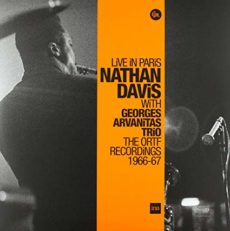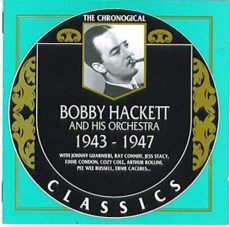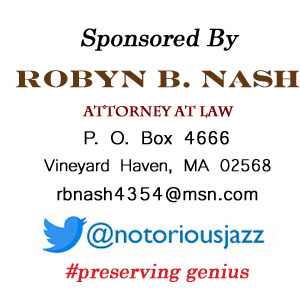
Daily Dose Of Jazz…
Donald Percy Rendell was born in Plymouth, England on March 4, 1926 and raised in London where his father, Percy, was the musical director of the D’Oyly Carte Opera Company; his mother Vera was also a musician. He attended the City of London School, to which he gained a choral half-scholarship and during school was evacuated during the Second World War to Marlborough College, where he heard jazz for the first time.
Rendell began playing the piano at the age of five but switched to saxophone in his teens. While working for Barclay’s Bank, he left to become a professional musician and began his career on alto saxophone but changed to tenor saxophone in 1943. During the rest of the 1940s, he was in the bands of George Evans and Oscar Rabin. Beginning in 1950, he spent three years in the Johnny Dankworth Septet and performed with Billie Holiday in Manchester, England, before playing in the bands of Tony Crombie and Ted Heath.
After touring in Europe with Stan Kenton, he played in Cyprus with Tony Kinsey, then Don was a member of Woody Herman’s Anglo American Herd in 1959. During the late 1950s and early Sixties, he led bands, including one with Ian Carr that lasted until 1969, one with Barbara Thompson in the 1970s, and as the sole leader in the 1980s and 1990s. In particular, the Rendell-Carr Quintet gained an international reputation, performing in France at the Antibes Festival and was the Band of the Year for three years in succession in the Melody Maker poll. He performed in festivals in England and France as well as working with Michael Garrick and Brian Priestley.
He taught at the Royal Academy of Music for three years in the early 1970s, at the Guildhall School of Music and Drama beginning in 1984 and wrote instruction books on flute and saxophone. Don Rendell, who played soprano saxophone, flute, clarinet and was also an arranger, passed away after a short illness at the age of 89 on October 20, 2015.
More Posts: arranger,author,bandleader,clarinet,educator,flute,history,instrumental,jazz,music,saxophone

Daily Dose Of Jazz…
Bob Hardaway was born on March 1, 1928 in Milwaukee, Wisconsin to a dad who earned the nickname of J.B. “Bugs” Hardaway by inventing the characters of Bugs Bunny and Woody Woodpecker. Moving to Hollywood got him his early coaching from film composer Darrell Caulkner. As an instrumentalist, he learned many fundamentals in his Air Force band, which inspired him to write music for a touring show, Air Force Frolics, which he also conducted. After military service he returned to college in Los Angeles, California then began a career as a big-band section player in reliable outfits such as Ray McKinley. It was Billy May who came through with the first recorded solo opportunity for him on a Capitol album promising an instrumental Bacchanalia.
Hardaway’s presence as a soloist was furthermore boosted on a mid-’50s series of Decca sides by bandleader Jerry Gray, among the features being the reliable “Thou Swell,” the gentle “Baby’s Lullaby,” and a pounding “Kettle Drum.” He had the first saxophone chair in the Woody Herman band in 1956 and also performed and recorded with big-band maestros Stan Kenton, Les Elgart, Benny Goodman, Alvino Rey, and Med Flory, among others. He would record on sessions with Lulu, Bonnie Raitt, Neil Diamond, Roger Neumann’s Rather Large Band, Harry Nilsson and Doris Day.
Jazz discographies alone pile up nearly 75 recording sessions involving Hardaway between 1949 and 1995. In addition, there were vocalists and vocal groups too numerous to name outside of that genre with which he recorded, usually in the company of A-list session players such as bassist Carol Kaye. At 91, multi-instrumental reedist Bob Hardaway has been retired since the Nineties.
More Posts: clarinet,english horn,flute,history,instrumental,jazz,music,saxophone

Daily Dose Of Jazz…
Nathan Tate Davis was born on February 15, 1937 in Kansas City, Kansas and eventually would travel extensively around Europe after World War II. He moved to Paris in 1962 but would return to the U.S. by 1969, holding a Ph.D. in Ethnomusicology from Wesleyan University and was a professor of music and director of jazz studies at the University of Pittsburgh, an academic program that he helped initiate.
He was the founder and director of the University of Pittsburgh Annual Jazz Seminar and Concert, the first academic jazz event of its kind in the United States. He also helped to found the university’s William Robinson Recording Studio as well as establish the International Academy of Jazz Hall of Fame located in the school’s William Pitt Union and the University of Pittsburgh-Sonny Rollins International Jazz Archives.
One of Davis’ best known musical associations was heading the Paris Reunion Band from 1985 to1989, which at different times included Nat Adderley, Kenny Drew, Johnny Griffin, Slide Hampton, Joe Henderson, Idris Muhammad, Dizzy Reece, Woody Shaw, and Jimmy Woode. He also toured and recorded with the post-bop ensemble leading Roots which he formed in 1991. He composed various pieces, including a 2004 opera entitled Just Above My Head.
He retired as director of the Jazz Studies Program at Pitt in 2013. Davis also served as the editor of the International Jazz Archives Journal. Over the course of his career, he recorded eighteen albums as a leader.
Multi-instrumentalist Nathan Davis, who played the tenor saxophone, soprano saxophone, bass clarinet, and flute, and was awarded the Mid-Atlantic Arts Foundation’s BNY Mellon Jazz Living Legacy Award at the Kennedy Center for the Performing Arts, passed away in Palm Beach, Florida on April 8, 2018 at the age of 81.
More Posts: clarinet,educator,flute,history,instrumental,jazz,music,saxophone

Daily Dose Of Jazz…
Arthur Francis Rollini was born February 13, 1912 in New York City into a musical family of Italian descent and grew up in Larchmont, New York with his multi-instrumentalist older brother Adrian. In 1929 he played in England for Fred Elizalde and worked for the California Ramblers and big band pioneer Paul Whiteman.
From 1934 to 1939 he was a member of the Benny Goodman Orchestra. The highlight of that period was a breakout performance for big band jazz at Carnegie Hall in 1938. He worked with Richard Himber and from 1941-1942 with Will Bradley. From 1943 to 1958 he worked as a studio musician for the American Broadcasting Company.
Rollini’s work can be found on recordings with the bands of Wingy Manone, Adrian Rollini, Benny Goodman, Joe Venuti, Bobby Hackett, Lionel Hampton, Harry James, Louis Armstrong and Brad Gowans. In 1939, he starred in an Allstar band of Goodman, Bunny Berigan and Jack Teagarden with Blue Lu.
In 1987, he published his autobiography Thirty Years With the Big Bands. Arthur Rollini, who played tenor saxophone and clarinet, and was nicknamed Schneeze, passed away on December 30, 1993 in Florida.
More Posts: clarinet,history,instrumental,jazz,music,saxophone

Daily Dose Of Jazz…
Chris Biscoe was born on February 5, 1947, in Pensford, Somerset, England and in 1963 taught himself to play alto saxophone and then started playing tenor, soprano, baritone, and also comparatively rare alto clarinet. Before he became a notable presence on the UK Jazz scene, he was a computer programmer.
From 1970 to 1973 Biscoe played with National Youth Jazz Orchestra in London, doing gigs with various other London-based bands of that period, including Redbrass. He worked with several notable jazz musicians during the Seventies such as Harry Beckett, Ken Hyder, Didier Levallet, Chris McGregor, Andy Sheppard, Graham Collier, Danilo Terenzi, Pete Hurt, Tommy Chase, Pete Saberton, Barry Guy, Dave Holdsworth, and Pete Jacobsen.
In 1979, Chris had a long-term association with Mike Westbrook touring throughout Europe and playing international festivals in Australia, Singapore, Hong Kong, Canada and the USA. In the same year, he also formed a quartet featuring Peter Jacobsen, expanded to a quintet in 1980, a sextet in 1986, and reformed as a quartet in 1987. During the Eighties he also recorded two albums.
During the late 1980s and 1990s, Biscoe toured and recorded with George Russell, Andy Sheppard, Liam Noble, Gail Thompson’s Jazz Africa, Harry Beckett, and also played in France with Didier Levallet’s groups and the collective band called Zhivaro. In 1991, he released a second cassette, Modern Alarms, and also recorded in the Dedication Orchestra in the Spirits Rejoice project.
Between 1997 and 2000, he became the first English musician to join the Orchestre National de Jazz. Multi-instrumentalist Chris Biscoe plays the alto, soprano, tenor and baritone saxophone, the alto clarinet, piccolo, and flute and continues to play and record.
More Posts: bandleader,clarinet,flute,history,instrumental,jazz,music,piccolo,saxophone



